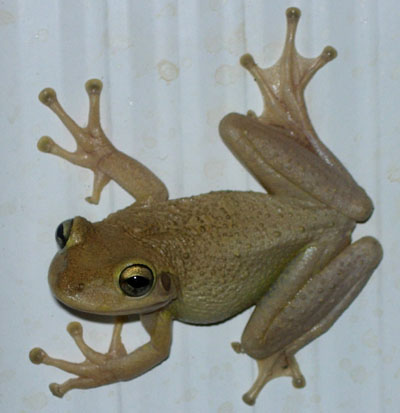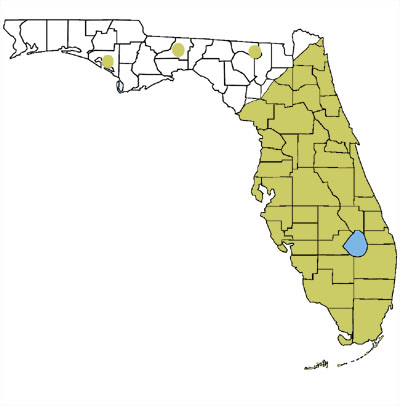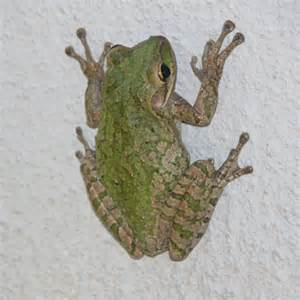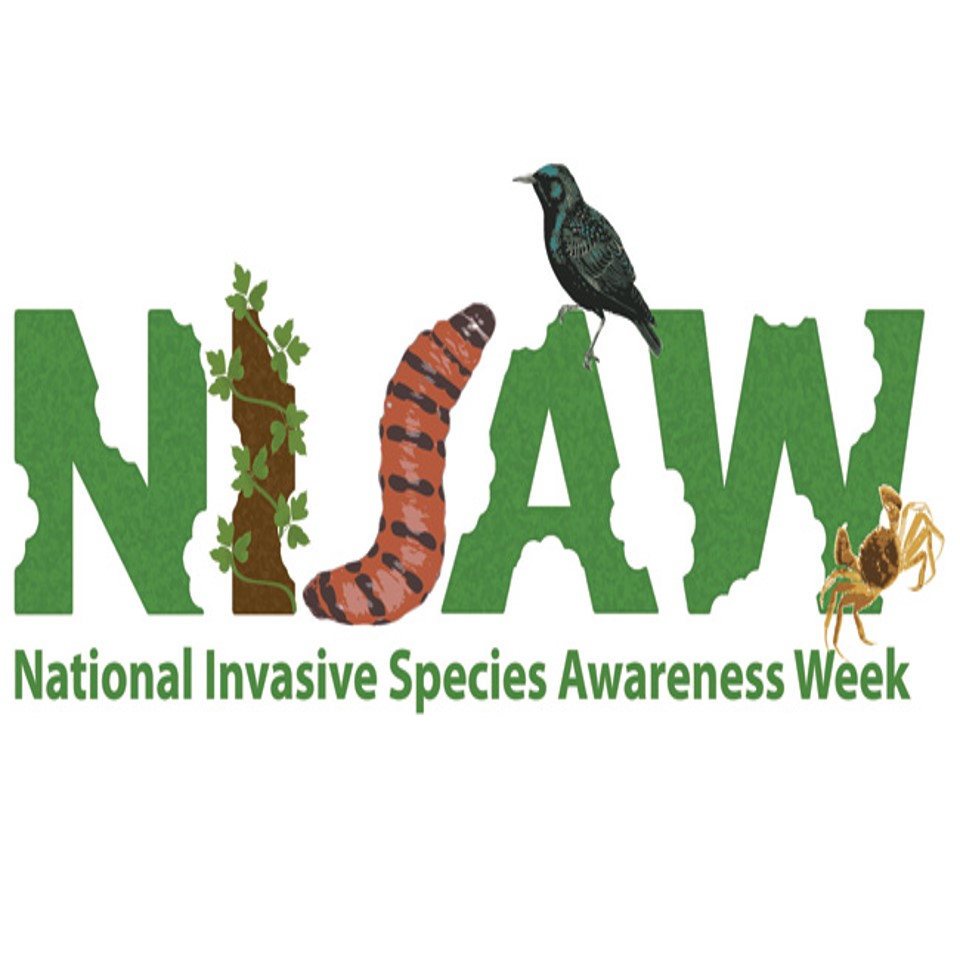National Invasive Species Awareness Week
WERE YOU AWARE THAT THE INVASIVE CUBAN TREEFROG HAS MADE IT TO THE FLORIDA PANHANDLE?
Maybe…
Some of you have been following this story in this newsletter, some of you may have attended our workshop in Panama City in September of 2023 (where we caught three of them), and some of you may have found the frog on your property. But some of you may be unaware this common invasive animal from central and south Florida has been found here. Well… it has.
The Cuban treefrog (Osteopilus septentrionalis) is native to Cuban, and other Caribbean Islands, and arrived in Florida in the early part of the 20th century – most likely as a hitchhiker on a container or cargo boat. From there they have dispersed across the Florida peninsula where they have been established for several decades now.

There are several issues with this non-native frog. For one, there are environmental impacts. They are large treefrogs and prey on many of our native species. There is evidence of the decline of native frogs due to their presence – and this includes predation of Cuban treefrog tadpoles on native frog tadpoles. Their skin produces a mild toxin that has not stopped native frog predators from consuming them, but appears they are less nutritious and may be avoided. There is also evidence they may have introduced new diseases and parasites that are impacting native amphibians.
Two, there are negative impacts on humans – our quality of life. One issue is sheer number. Our homes provide many places for them to hide, and food to eat. As they out compete, or consume, the native frogs, they quickly increase in numbers to the point where they are a nuisance. Lots of feeding frogs produce a lot of frog feces, which can leave an unsightly mess all over the house. Unlike many of our native frogs, they have no problem entering our homes. The high numbers gathered around the porch light near the front door – an open door is easy access for them. They have also accessed homes via the vent pipe for the bathroom. Many have opened the lid of their toilet to find a large treefrog sitting, or swimming, there. Large numbers of frogs also mean large numbers of singing males, and they prefer to call just before dawn – annoying many homeowners. Add to this the toxin it produces in its skin. Though not lethal it is very irritating to the eyes and nose and can cause seizures in pets who may grab one. They have been known to hide in electric panels on the outside of homes and cause short circuits to electrical systems.
The first I heard of a Cuban treefrog in the Florida panhandle was a colony near Tyndall AFB in Bay County. It was later verified that they were breeding. There had been other one-off reports of them, but this indicated that they could tolerate our colder winters – though our winters have been mild in recent years. There were further reports from Okaloosa County, Santa Rosa County, and Escambia County. EDDMapS now lists at least one record in every panhandle county except Holmes, Washington, and Liberty. It is believed the common method of introduction is hitchhiking on trucks delivering plants, or other products, coming from south Florida. It is very likely that the frogs are in those three counties and have not been reported.

HOW CAN I TELL A CUBAN TREEFROG FROM OUR NATIVE FROGS?
First, it is a treefrog. This means that it has enlarged toe pads for climbing trees and sticking to the sides of buildings. Treefrogs tend to feed at night and are often seen on houses near exterior lights where insects gather. During the day they will hunker down in shrubs and trees. If you have them, you will most likely see them on the side of your home at night.

Second, they are much larger than our native treefrogs. Most of our native treefrogs do not grow longer than three inches, Cuban treefrogs can reach lengths up to six inches. So, a large treefrog is most likely one.
Third, they can appear in a variety of colors. Green, gray, brown, and even white individuals can be found. But they have warty skin. Many native treefrogs have smooth skin. Some have granular skin that may appear warty – but Cuban treefrogs are warty.
NOTE: Cuban treefrogs will NOT have warty skin covering the head. The small native cricket frogs, who also have warty skin and do have warts on head area. Check notes on young treefrogs below.
Fourth, they have a yellow color under their armpits and in the groin area.
Fifth, with larger Cuban treefrogs, the skin will be fused to the skull.
Young Cuban treefrogs – those within the size range of our native frogs, have bluish colored leg bones when viewed from the belly side. They also have large red “bug eyes” and a yellow stripe extending from their eye (not the lip) to the rear leg.
This is an EDRR species in the Florida panhandle currently. We are not sure where on the invasive species curve their populations currently lie, but a rapid response is in order for this species.
To verify identification and advice on managing, contact your county extension office. If you are in the Pensacola area, we will be holding a workshop on this topic April 25, 2024 at the Escambia County Extension Office. We will be providing PVC treefrog traps to help capture them. If interested contact Rick O’Connor at 850-475-5230 ext.1111, or email roc1@ufl.edu.
Reference
https://edis.ifas.ufl.edu/publication/UW259.

- St. Joe Red Tide Claiming Terrapins - December 15, 2025
- The 2025 Snake Watch Report for the Pensacola Bay Area - December 15, 2025
- Rattlesnakes on Our Barrier Islands; Part 2 – Prey Selection - December 15, 2025
